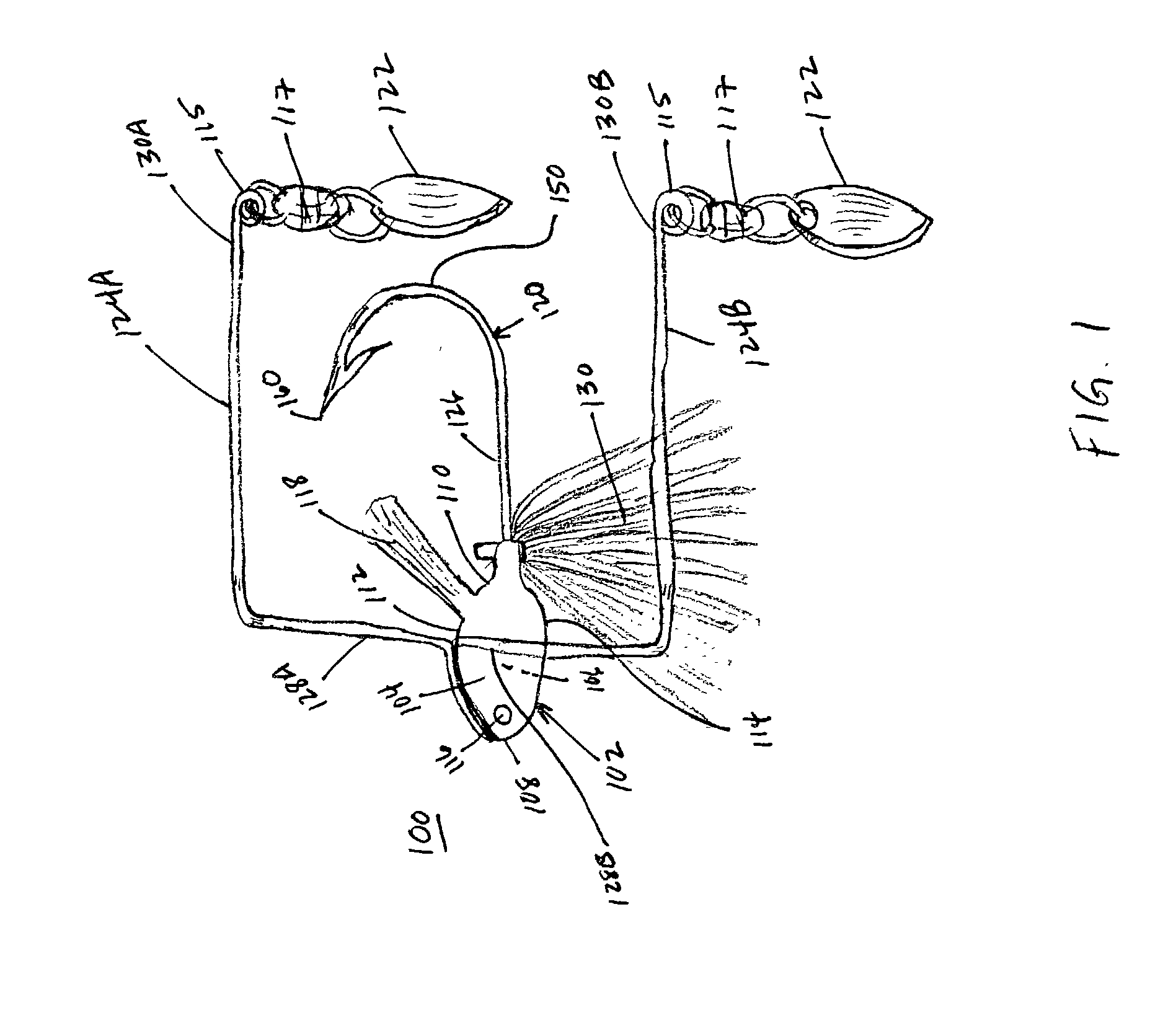Spinner bait
a technology of spinning bait and artificial lures, which is applied in the field of spinning baits, can solve the problems of difficult, if not impossible, to cast an artificial lure close to a fish, become tangled, and fish are difficult to s
- Summary
- Abstract
- Description
- Claims
- Application Information
AI Technical Summary
Benefits of technology
Problems solved by technology
Method used
Image
Examples
Embodiment Construction
[0021] An embodiment of a spinner bait 100 of the present invention is shown in FIG. 1. The spinner bait 100 includes a head 102, one or more legs 124, a hook 120, and one or more spinner blades 122. The head 102 preferably resembles the head and / or body of insects or animals on which fish feed, e.g., frogs, crawdads, salamanders, smaller fish, etc. As such, the head 102 specifically, and the spinner bait 100 generally, may have any number of features, e.g., eyes, a mouth, or special colors or markings, for making the spinner bait 100 more closely resemble naturally occurring marine life. The head 102 preferably is weighted and may be made of lead, dense plastic, dense rubber, or other similar materials known to one of ordinary skill in the art.
[0022] The head 102 has a top surface 104, a bottom surface 106, a front end 108, a rearward end 110, and opposing sides 112, 114. At the front end 108 is a hole 116 for receiving a fishing line by which the spinner bait 100 is pulled through...
PUM
 Login to View More
Login to View More Abstract
Description
Claims
Application Information
 Login to View More
Login to View More - R&D
- Intellectual Property
- Life Sciences
- Materials
- Tech Scout
- Unparalleled Data Quality
- Higher Quality Content
- 60% Fewer Hallucinations
Browse by: Latest US Patents, China's latest patents, Technical Efficacy Thesaurus, Application Domain, Technology Topic, Popular Technical Reports.
© 2025 PatSnap. All rights reserved.Legal|Privacy policy|Modern Slavery Act Transparency Statement|Sitemap|About US| Contact US: help@patsnap.com


